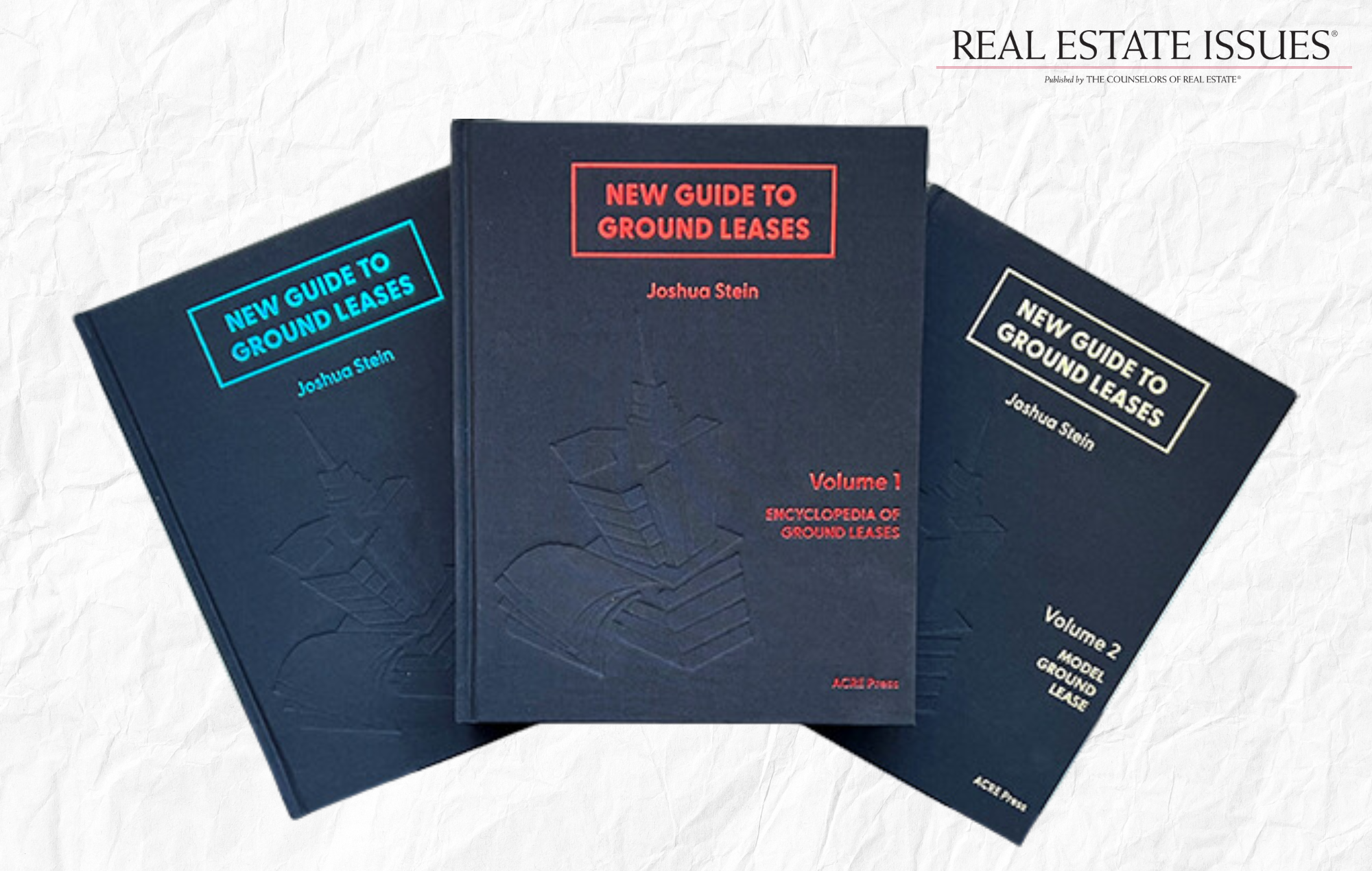Joshua Stein’s New Guide to Ground Leases, published in 2024 by ACRE Press, is a comprehensive resource for anyone dealing with ground lease transactions. The Guide consists of three volumes which include:
- Volume 1: Encyclopedia of Ground Leases – This volume covers a wide range of topics related to ground lease transactions. It delves into issues that arise during negotiations, including rent adjustments, financing, and dealing with landlord bankruptcies.
- Volume 2: Model Ground Lease – The second volume includes a complete model ground lease. It consists of two parts:
-
- Base Case: This section outlines the minimum provisions required for any ground lease.
- Bells & Whistles: Here, you’ll find options, alternatives, special clauses, and additional provisions that can enhance a ground lease.
-
- Volume 3: Additional Model Document Templates – In this volume, you’ll discover more than two dozen templates for ground lease transactions. Each template includes both a Base Case and Bells & Whistles.
This review will address Volume 1 which covers essentially every aspect of ground leases. The Guide at first glance looks like a basic reference book used only for reference for certain topics. It is just that, but at the same time, many sections of the Guide are interesting if not required reading for practitioners dealing with ground leases.
The book is written by a very experienced lawyer and provides any lawyer with the information needed to prepare a ground lease. At the same time, the book is very useful for owners, tenants, brokers, appraisers, lenders, and others involved with ground leases.
The Guide is laid out logically with topics covered in chapters alphabetically, starting with assignments and ending with zoning changes. Each topic is thoroughly covered and includes a basis in common law and applicable regulations. The topics address case law and contractual considerations.
A significant strength of this book lies in its detailed analysis of the financial dynamics of ground leases. It provides an in-depth examination of rent structures, valuation methodologies, and economic implications for both lessors and lessees. This section includes complex financial models and economic theories, making it particularly valuable for investors and financial analysts.
A substantial portion of the book is devoted to the negotiation and drafting of ground leases. This section includes comprehensive sample clauses, detailed checklists, and best practice guidelines, which serve as practical tools for practitioners. The author’s methodical approach ensures that even intricate legal concepts are clearly articulated.
While it is designed as a reference guide, several sections are interesting as well as educational reading. The section on Horror Stories provides several examples of how lease provisions created problems and the impacts on the landlord or tenant. Having participated in a number of arbitrations on ground leases, a number of the examples he includes are not uncommon, although a few are situations I have not seen.
Some of the biggest problems I have seen in ground leases is the criteria established for setting the rent at option or renewal periods. In long-term ground leases, a primary concern is maintaining the rent at a level that does not injure the tenant, but at the same time provides a reasonable return to the landowner over a period that sometimes exceeds a person’s life expectancy. Renewals based on fixed criteria can be problematic for a landlord or tenant when markets and economies fluctuate. In addition, zoning and land use controls can change which could wipe out a tenant’s interest if based purely on market, or it can leave the landlord in a losing position.
The Guide shows through examples the issues created by setting a fixed percent of value and other variables. The guide shows examples of problems when even a single word (such as the word “by” or “to”) can cause such an impact as to make the continued occupancy infeasible. Another problem discussed is the simple act of checking the lease before execution to make sure the math is correct in any exhibits such as the rent schedule if attached as an exhibit.
The book covers all aspects of ground leases in great detail, making it a one-stop resource for anyone interested in the topic. The inclusion of sample clauses, checklists, and case studies adds practical value, allowing readers to apply the concepts in real-world scenarios. Despite the complexity of the subject matter, the author maintains a clear and accessible writing style, ensuring that the content is understandable to a wide audience.






